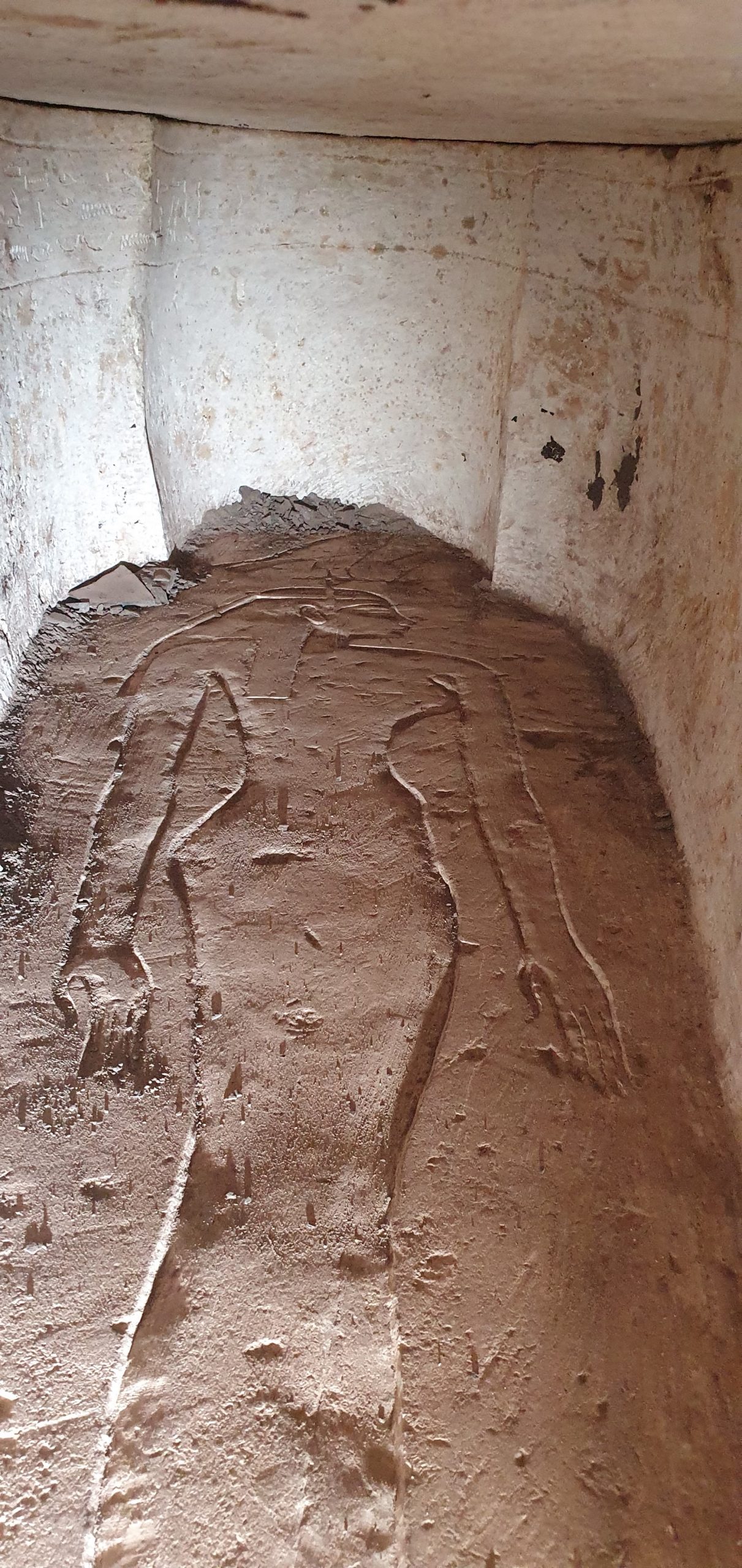In Ancient Egypt, life was precarious. Without modern science or medicine – or at least, few methods you’d want to try out – people invariably turned to magic for protection against the dangers of the world. And, according to a recent find by archeologists from the Czech Institute of Egyptology (CIE) at Charles University in Prague, so did the corpses.
The tomb of Džehutiemhat, a royal scribe who lived in the 26th or 27th Dynasty of Egypt – that is, about 2,500 years ago – doesn’t have a lot going for it in terms of artifacts. It probably did once upon a time, but it had been thoroughly looted by the 5th century CE, the researchers behind the discovery at Abusir burial site, just south of Cairo, explained in a translated statement.
What is noteworthy, however, is the decoration. As is par for the course when it comes to the Ancient Egyptians, the walls and sarcophagus are covered with images of gods and goddesses: there are depictions of the sun god Ra’s journey through the sky across the ceiling; images of the goddesses Eset and Nebtheta adorn the sarcophagus walls; and Imentet, the goddess of the West, and Geb, god of the earth, are depicted on the inside of the coffin.
A view of the interior of the sarcophagus where Dzhehutiemhat’s mummy used to rest in the representation of the Goddess of the West.
Petr Košárek, © Czech Institute of Egyptology FF UK
“The Goddess of the West inside the sarcophagus represents the protector, guide and symbolic mother of the deceased,” explains Jiří Janák, who analyzes and interprets religious and magical texts as part of field research.
The walls and sarcophagus are also covered in various hieroglyphic texts, from hymns honoring the sun to the so-called “canopic sayings”, to the many, many spells and wards designed to allow old Džehutiemhat an easy transition into the afterlife and keep him protected after his death.
Roughly carved image of the sun god during his nocturnal pilgrimage.
Petr Košárek, © Czech Institute of Egyptology FF UK
But what really sets this tomb apart is what all these spells are protection from: snakes.
“Such a strong emphasis on snake spells was probably the consequence of a personal choice of the tomb owner,” CIE director Miroslav Bárta told Live Science. “No similar case with such excessive attention to these spells is known.”
While the attention given to protecting against snake bites was arguably a bit late for Džehutiemhat, it wasn’t a trivial fear. Venomous snake bites were likely more common in Ancient Egypt than they are today, as the climate was more humid and fertile, allowing snake species to flourish which today are confined to habitats further south.
Interestingly, snakes were also a religious symbol, capable of offering protection to the deceased and his mummy, the researchers say.
“The entrance to the nearby Menechinekon’s burial chamber was protected by the guardians of the gates of the 144th chapter of the Book of the Dead,” said Renata Landgráfová, director of the Czech Institute of Egyptology and an expert on the ancient Egyptian language and texts. But, she explained, “in the case of Džehutiemhat, snakes from the Pyramid Texts play this role.”
North wall of Dzhehutiemhat’s burial chamber.
Petr Košárek, © Czech Institute of Egyptology FF UK
Unfortunately for Džehutiemhat, all those spells against snake attacks couldn’t help what seems to have been an extreme case of osteoporosis and wear and tear to his spine from sitting around writing all day. He died at the age of just 25 – young even back then – which leads the researchers to suspect that his bone problems were genetic in origin.
“[It] seems to be a part of his DNA setup,” Bárta told Live Science, “because [osteoporosis] usually occurs in a later age.”
If that’s correct, it may offer a hint as to Džehutiemhat’s place within the Abusir burial site. Other inhabitants of nearby tombs have also been confirmed to have had the same disease – meaning they may well have all been related. Only Džehutiemhat’s mother stands out as being non-local: her name, the extremely cool “Nubian Fox”, is written in an unusual way, most likely Berber in origin.
Regardless of the fact that those spells should have warded against graverobbers rather than snakes – whom you might argue are less of a danger after you’re already dead, let’s face it – the discovery nevertheless adds to the team’s growing understanding of ancient Egypt at the end of its glory days, Bárta said.
“The shaft tombs represent a special type of tombs of this period,” he added. “They were created as a specific attempt by the ancient Egyptian elites for a renaissance and are based on the image of the tomb of King Djoser, the founder of the famous Old Kingdom, the time of the pyramid builders in the 3rd millennium. [BCE].”
Excavation and analysis of the site is ongoing.
Source Link: Ancient Egyptian Tomb Reveals Mummy With A Snake Obsession
